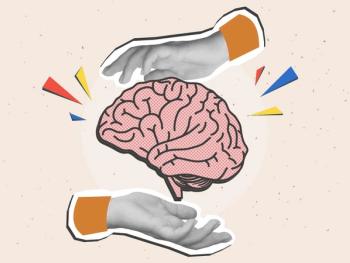
- Vol 37, Issue 2
- Volume 37
- Issue 2
The Arms of Ivy Welcome Her
With the help of psychotherapy, something from the deep unconscious helped cure her depression, forge her character, and guide her to a sense of peace.
PORTRAIT OF A PSYCHIATRIST
-Series Editor, H. Steven Moffic, MD
Editor’s note: This case is completely fictional and not intended to identify any one patient.
I met “Marni” in my office a day after the call from the hospital. “We are discharging a 42-year-old woman with depression, psychosis, and continued delusions. The
Something that morning led me to say yes. I was never sure what compelled me to blurt out that answer so quickly. Maybe I wanted to stay in good graces with the hospital referral source. I had always believed that a depth psychotherapy approach could work with patients with of psychosis as Carl Jung, John Perry, Harry Stack Sullivan, and Karl Menninger had said so eloquently in the past. Maybe (and most likely), it was a voice from my deep unconscious connecting our fates for reasons that only now seem apparent.
Here we were, sitting across from each other in my old alder wood rockers. She started quickly, almost before I could introduce myself. “I don’t know why the FBI was following me. I don’t know why I was accused of smuggling something across the border. Do you?”
Related content:
And so it went, as we tackled her fears, paranoia, psychotic transference, and ambivalence about therapy. Her depression slowly resolved, but the psychotic symptoms would wax and wane as we unraveled her story of feeling identified as the unwanted daughter and black sheep within her family culture. Marni dealt with constant feelings of inferiority and dreamt often of church elders coming to her home, fearful that they would find all the dirty linen crammed in the nooks and crannies of her house. She awoke often from these dreams in full blown panic attacks.
She kept coming, however. Week after week, she showed a courage to confront psychological issues rarely seen in my 40 years of practice. Finally, her work and persistence led to this healing dream from the deep unconscious:
“I am walking toward a cliff that looks over a canyon. Across the divide I see a lush green field of ivy. I am quite forlorn as I approach, when suddenly the leaves start to move and a woman made of ivy with the most beautiful face begins to grow from the ground. Her arms are vines and her right arm reaches out across the divide and touches my face with the softest, most loving, caress I had ever known.” I awake.
We were both stunned as neither she nor I had any associations to the lady of ivy. I went to the bookshelf and pulled down J.E. Cirlot’s
Sometimes in life the fates are not kind
Even though she had struggled bravely with a life-altering psychotic depression, a deadly physical illness was now thrown in her path. She returned to see me weekly for her angst, as she and her medical specialists turned to all the latest Western treatment protocols and medications.
No matter, the illness was winning. I asked her to begin active imagination as a way to let the “Two Million-Year-Old Self” or “Old Woman of Days” have their say about her plight. This a meditative technique, discovered by Jung, allows the unconscious to come to light in fantasy and imagination while the patient is awake and can interact with the material. It is like dreaming while awake.
Marni had always been hesitant to try this method but now, in the face of death, her resistances melted. I asked her to watch the YouTube trailer
“I am approaching a ravine and I know I have come here before. There is a bridge across it. The bridge is ancient, and I somehow know that millions of people have crossed it over the millennium. There are old, large boulders at each corner, and I cross to the other side where dark woods and a well-traveled path lead into it. As I cross the bridge, the air is clean and refreshing, and I take a deep and filling breath. I begin with some trepidation to walk the path into the woods when suddenly I see her. It is The Lady of the Vines. I had not seen her since my dream so many years ago and yet here she was, and her ivy arm reached out and went into my mouth and I felt an immense strength and energy. She said she would lead me, and we started down the path together.”
Marni died shortly after with
I now know, many years later, why I said yes to her treatment and why the work has remained so meaningful to me. It is because the zeitgeist of our times can “too easily choke out the voice of the soul and the spirit of the depths turning therapy into a series of precisely plotted maps: cognitive and behavioral, measured and manualized, as if the imagination could be caught in a step-by-step cookbook.”1 Our therapy never dropped to this collective level and Marni never let me forget that “it is only with the heart that one can see rightly; what is essential is invisible to the eye.”2
It is for all this that I say thank you to her and will cherish the memory of our work always.
Dr Mecouch is in private practice in Sisters, OR.
Editor's note: This article was originally posted on August 6, 2019, and has since been updated.
Disclosures:
The author reports no conflicts of interest concerning the subject matter of this article.
References:
1. Mecouch G. While Psychiatry Slept: Reawakening the Imagination in Therapy. Sante Fe, NM; Belly Song Press; 2018.
2. Von Franz, Marie-Louise. Puer Aeternus: A Psychological Study of the Adult Struggle With the Paradise of Adulthood. Boston, MA: Sigo Press; 1997.
Articles in this issue
over 5 years ago
Chaos Theory With a Human Face: Niall McLaren, MBBS, FRANZCPalmost 6 years ago
Introduction: Trauma and Its Psychiatric Consequencesalmost 6 years ago
Stroke in Young Adults: The Lasting Effects of Traumaalmost 6 years ago
In This Issue of Psychiatric Times: Vol 37, No 2almost 6 years ago
The Show Must Go Onalmost 6 years ago
Psychiatric Malpractice Grand Rounds: Addiction Psychiatryalmost 6 years ago
Bipolar Disorder: Practice-Changing Trials from 2019Newsletter
Receive trusted psychiatric news, expert analysis, and clinical insights — subscribe today to support your practice and your patients.














